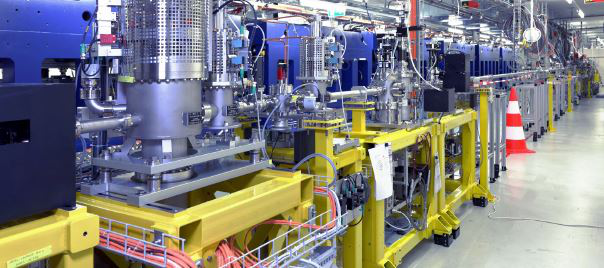Speaker
Description
Extreme ultraviolet (XUV) and x-ray free-electron lasers (FELs), delivering intense ultrashort pulses in the femtosecond regime and even below, create new opportunities for site-specific light-matter interaction, and eventually to control the intrinsic quantum dynamics of a system with atomic scale resolution. Using visible lasers, the technique of ultrafast transient absorption spectroscopy and related multidimensional spectroscopies, which elegantly combine both high spectral and temporal resolution through multi-pulse sequences, are now routinely used both for understanding and controlling photochemical reactions, however typically coupling only to the valence shell of the binding electrons and the intramolecular vibrational degrees of freedom, which is directly linked to the low photon energies being used (from infrared to visible and ultraviolet).
In this talk I will give an overview of our recent efforts to perform all-XUV-optical transient absorption spectroscopy of gas-phase atoms and molecules [1-3]. Hereby we have proven sensitivity to element-specific spectral signatures identifying resonant electronic transitions in the XUV and how they are modified (both Stark shifts and line-shape asymmetry changes) due to the presence of the strong XUV free-electron laser electric field. Furthermore, transient spectro-temporal signatures could be extracted from the data, with a timescale below 3 femtoseconds, and understood through nonlinear interaction of pump and probe beams in the target medium, revealing direct sensitivity to the coherence properties of the FEL pulses. This can be regarded as a precursor to coherent multidimensional spectroscopy in the XUV spectral range.
An important ingredient for such measurements is a profound knowledge of the spectro-temporal properties of the employed FEL pulses. In our experiments we utilize the quasi-instantaneous non-resonant ionization dynamics of neon atoms in response to an FEL pump pulse as an ultrafast optical switch to modulate the XUV absorption properties of our gas target with timing precision below one femtosecond. Thereby, upon spectrally resolving the FEL probe transmission spectrum with a grating-based spectrometer, we are directly sensitive to the average chirp of the FEL probe pulses, revealing a pronounced positive chirp of about 30 fs² for the particular FEL machine settings [4]. Most importantly this is a direct spectro-temporal measurement, tracking the transmitted FEL photon energy spectrum as a function of pump-probe delay. No additional external laser pulses, which are typically challenging to synchronize at the precision level of a femtosecond, are needed for this all-XUV-optical scheme. Besides the importance of in-situ measuring such spectro-temporal pulse properties in transient-absorption and multidimensional-spectroscopy experiments, this new characterization method may also develop into a useful tool in general, extending the diagnostics toolbox of FEL pulses.
I gratefully acknowledge the fruitful collaborations [1-4] during our previous measurement campaigns at the Free-Electron-Laser in Hamburg (FLASH) at DESY.
[1] T. Ding et al., PRL 123, 103001 (2019).
[2] C. Ott et al., PRL 123, 163201 (2019).
[3] M. Rebholz et al., “All-XUV pump-probe transient absorption spectroscopy of the structural molecular dynamics of diiodomethane”, submitted manuscript (2020).
[4] T. Ding et al., “Measuring the frequency chirp of extreme-ultraviolet free-electron laser pulses by transient absorption spectroscopy”, submitted manuscript (2020).
